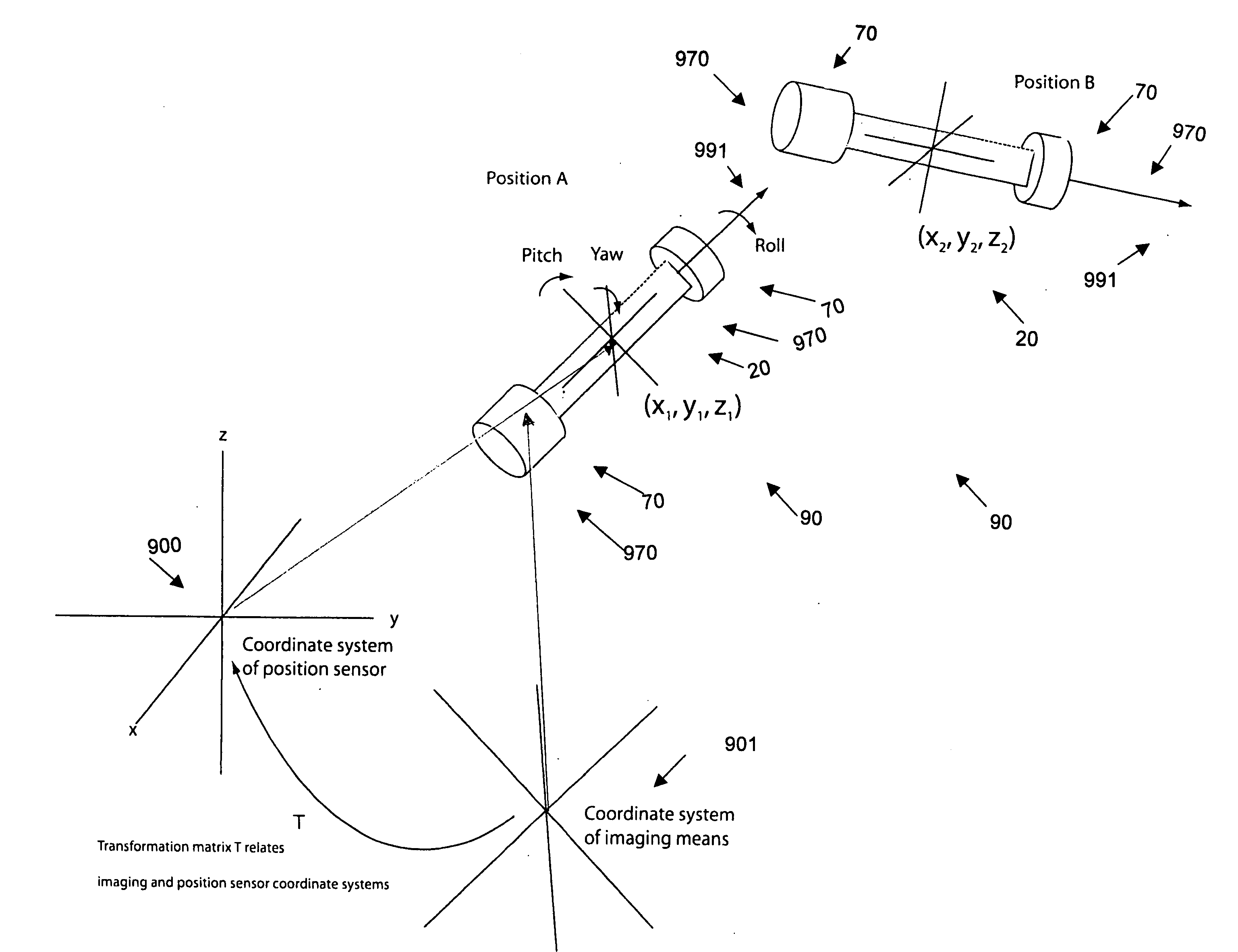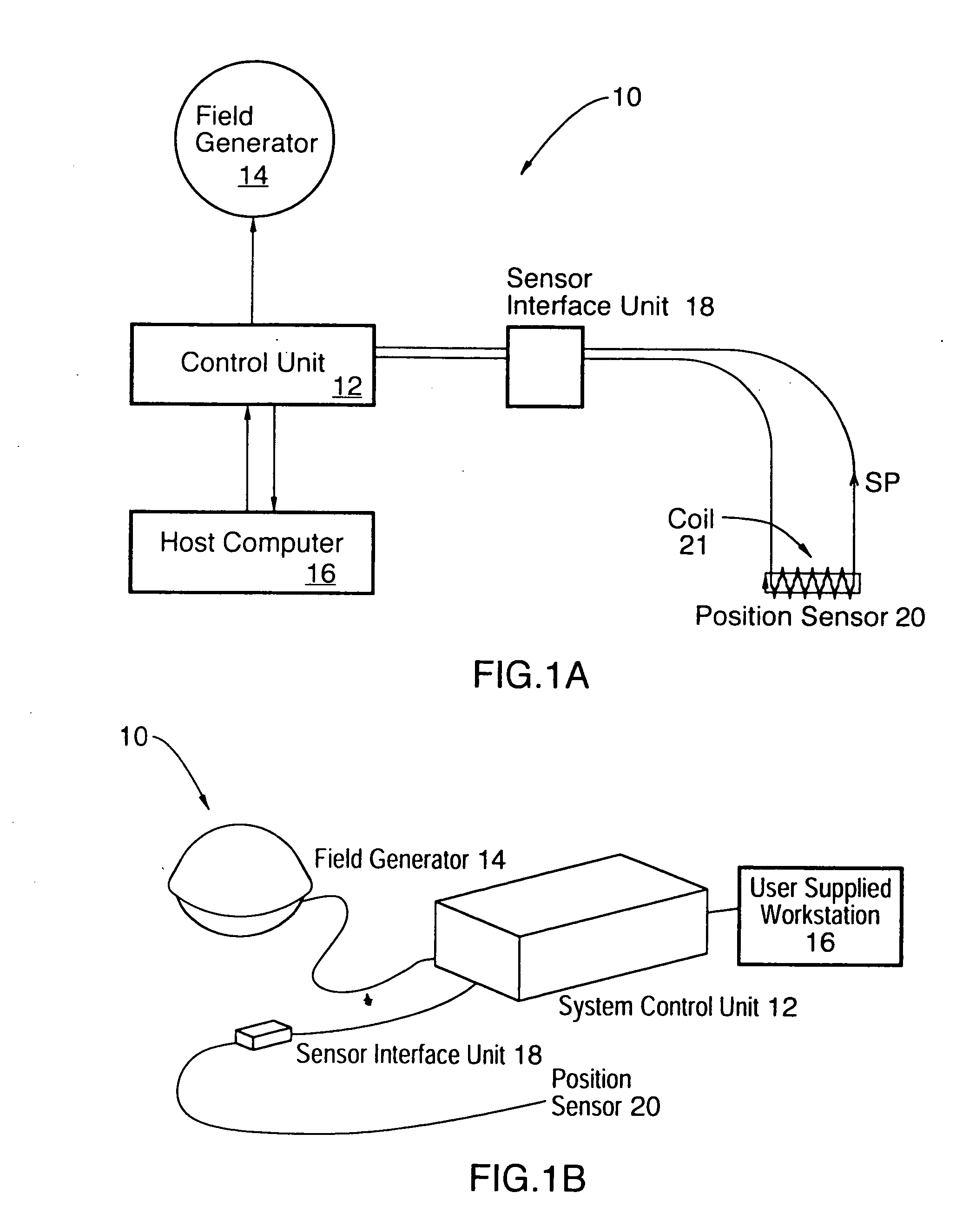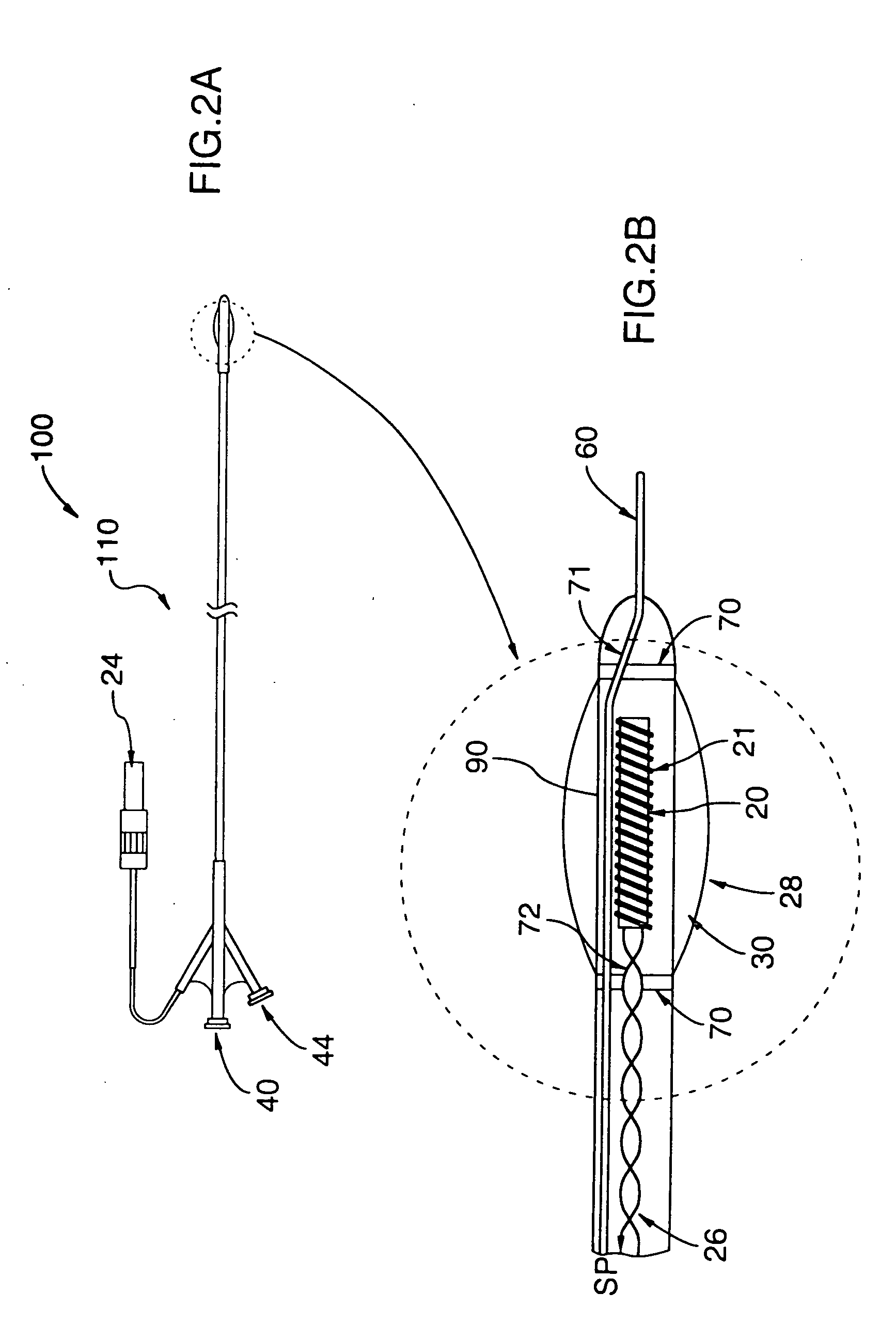Device and method for registering a position sensor in an anatomical body
a position sensor and anatomical body technology, applied in the field of devices and methods for registering the position sensor in an anatomical body, can solve the problems of inability to accurately determine the position sensor and the orientation of the position sensor, and the position sensor is not always easily identifiable in the acquired image, so as to achieve accurate determination and reduce the relative movement between the anatomical body and the position sensor
- Summary
- Abstract
- Description
- Claims
- Application Information
AI Technical Summary
Benefits of technology
Problems solved by technology
Method used
Image
Examples
Embodiment Construction
[0048]FIGS. 1A and 1B show a conventional position sensor system, shown generally by reference numeral 10. The system 10 comprises a control unit 12 that is connected to a field generator 14 and a host computer 16. The host computer 16 can be a user supplied work station. The field generator 14 generates a complex electromagnetic field within a frame of reference. A position sensor 20 within the frame of reference can sense the complex electromagnetic field. The system 10 also comprises a sensor interface unit 18 that interfaces the control unit 12 to the position sensor 20. It is understood that these components may be integrated together. For example, the sensor interface unit 18 may be combined with the control unit 12.
[0049] The position sensor 20 generally comprises a sensor element, such as a magnetic sensor coil 21, which reacts to, or senses, the complex electromagnetic field generated by the field generator 14. As the position sensor 20 moves in the electromagnetic field g...
PUM
 Login to View More
Login to View More Abstract
Description
Claims
Application Information
 Login to View More
Login to View More - R&D
- Intellectual Property
- Life Sciences
- Materials
- Tech Scout
- Unparalleled Data Quality
- Higher Quality Content
- 60% Fewer Hallucinations
Browse by: Latest US Patents, China's latest patents, Technical Efficacy Thesaurus, Application Domain, Technology Topic, Popular Technical Reports.
© 2025 PatSnap. All rights reserved.Legal|Privacy policy|Modern Slavery Act Transparency Statement|Sitemap|About US| Contact US: help@patsnap.com



